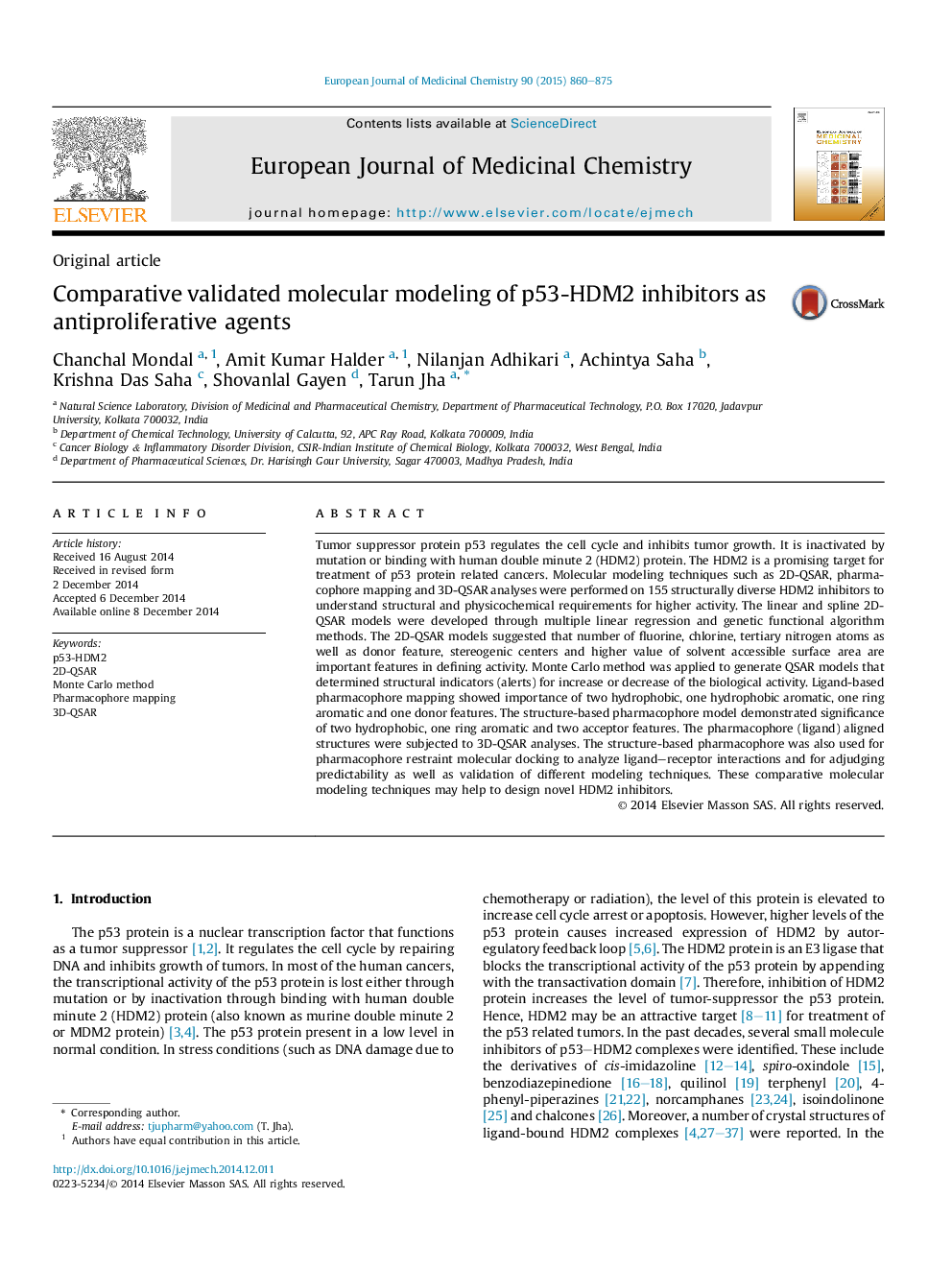| کد مقاله | کد نشریه | سال انتشار | مقاله انگلیسی | نسخه تمام متن |
|---|---|---|---|---|
| 1395528 | 1501126 | 2015 | 16 صفحه PDF | دانلود رایگان |

• Comparative validated molecular modeling was performed on p53-HDM2 inhibitors.
• 2D-QSAR (MLR/Monte Carlo) highlighted crucial descriptors and fingerprints.
• Ligand- and structure-based pharmacophores model highlighted essential features.
• Hydrophobicity, aromaticity, donor feature and SASA were found to be important.
• 3D QSAR and docking results adjudged the facts depicted in other models.
Tumor suppressor protein p53 regulates the cell cycle and inhibits tumor growth. It is inactivated by mutation or binding with human double minute 2 (HDM2) protein. The HDM2 is a promising target for treatment of p53 protein related cancers. Molecular modeling techniques such as 2D-QSAR, pharmacophore mapping and 3D-QSAR analyses were performed on 155 structurally diverse HDM2 inhibitors to understand structural and physicochemical requirements for higher activity. The linear and spline 2D-QSAR models were developed through multiple linear regression and genetic functional algorithm methods. The 2D-QSAR models suggested that number of fluorine, chlorine, tertiary nitrogen atoms as well as donor feature, stereogenic centers and higher value of solvent accessible surface area are important features in defining activity. Monte Carlo method was applied to generate QSAR models that determined structural indicators (alerts) for increase or decrease of the biological activity. Ligand-based pharmacophore mapping showed importance of two hydrophobic, one hydrophobic aromatic, one ring aromatic and one donor features. The structure-based pharmacophore model demonstrated significance of two hydrophobic, one ring aromatic and two acceptor features. The pharmacophore (ligand) aligned structures were subjected to 3D-QSAR analyses. The structure-based pharmacophore was also used for pharmacophore restraint molecular docking to analyze ligand–receptor interactions and for adjudging predictability as well as validation of different modeling techniques. These comparative molecular modeling techniques may help to design novel HDM2 inhibitors.
Figure optionsDownload as PowerPoint slide
Journal: European Journal of Medicinal Chemistry - Volume 90, 27 January 2015, Pages 860–875